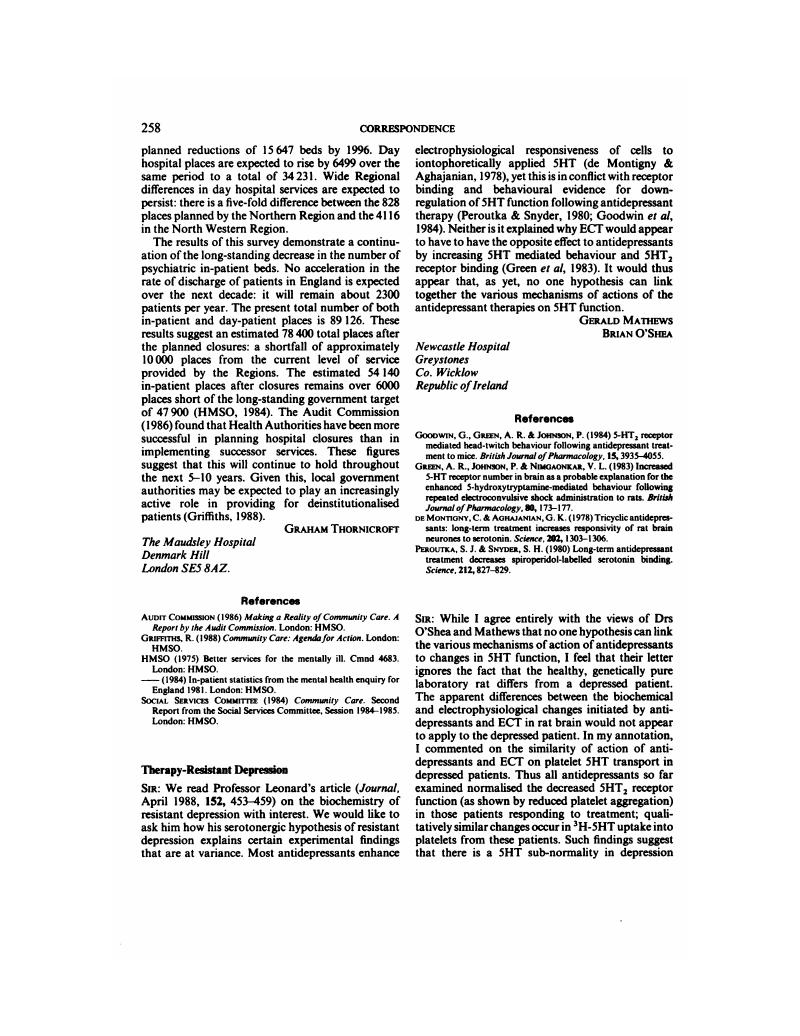No CrossRef data available.
Article contents
Therapy-Resistant Depression
Published online by Cambridge University Press: 02 January 2018
Abstract
An abstract is not available for this content so a preview has been provided. As you have access to this content, a full PDF is available via the ‘Save PDF’ action button.

- Type
- Correspondence
- Information
- Copyright
- Copyright © Royal College of Psychiatrists, 1988
References
Goodwin, G., Green, A. R. & Johnson, P. (1984) 5-HT2 receptor mediated head-twitch behaviour following antidepressant treatment to mice. British Journal of Pharmacology, 15, 3935–4055.Google Scholar
Green, A. R., Johnson, P. & Nimgaonkar, V. L. (1983) Increased 5-HT receptor number in brain as a probable explanation for the enhanced 5-hydroxytryptamine-mediated behaviour following repeated electroconvulsive shock administration to rats. British Journal of Pharmacology, 80, 173–177.Google Scholar
de Montigny, C. & Aghajanian, G. K. (1978) Tricyclic antidepressants: long-term treatment increases responsivity of rat brain neurones to serotonin. Science, 202, 1303–1306.Google Scholar
Peroutka, S. J. & Snyder, S. H. (1980) Long-term antidepressant treatment decreases spiroperidol-labelled serotonin binding. Science, 212, 827–829.Google Scholar



eLetters
No eLetters have been published for this article.